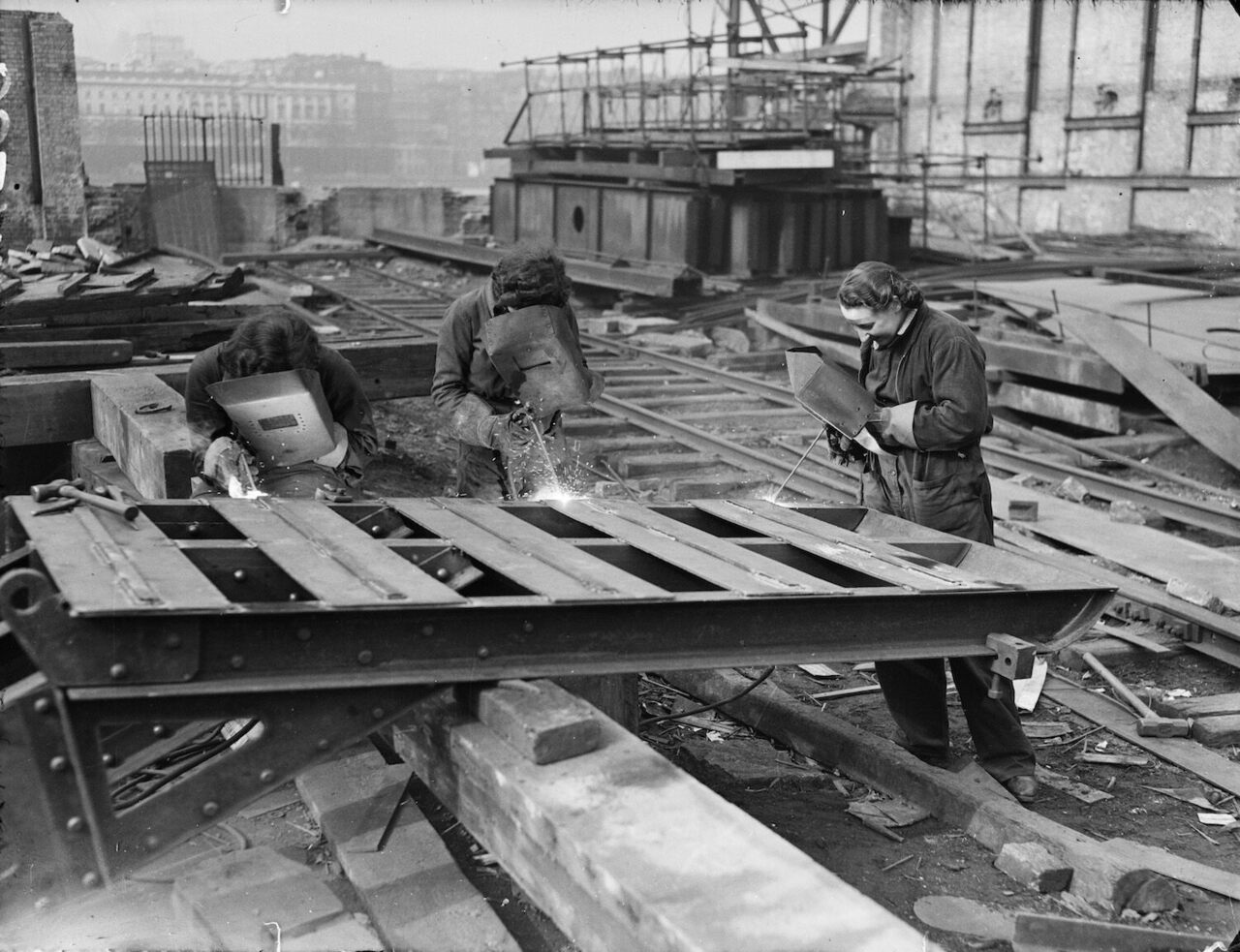Through his lens: A Dallas photographer uses social media to document his cancer battle
Through his lens: A Dallas photographer uses social media to document his cancer battleThis selfie became my first social media post when I let friends know I have Stage 4 esophageal cancer.
It was Sept. 9, 2016, outside Texas Oncology-Baylor Charles A. Sammons Cancer Center, which became my second home.
I'd been having difficulty swallowing on vacation that July and went to a

9/9/2016 — This selfie became my first social media post when I let friends know I have stage 4 esophageal cancer.
(Guy Reynolds/Staff Photographer)
Stage 4 simply means it has already spread. The secondary
tumor is in my liver and was the size of my fist. The primary tumor is
blocking about half my esophagus at the juncture with the stomach.
Chemotherapy began about a month after the diagnosis, on Sept. 22, 2016.
Along the way I’ve documented on Instagram my days during doctor visits in Dallas and Houston, in waiting rooms, labs, infusion clinic and radiology. A few times I asked others to make a snap.
Chemotherapy began about a month after the diagnosis, on Sept. 22, 2016.
Along the way I’ve documented on Instagram my days during doctor visits in Dallas and Houston, in waiting rooms, labs, infusion clinic and radiology. A few times I asked others to make a snap.
![12/22/16 — What I usually get from [my son] Drew. #nopicturesplease(Guy Reynolds/Staff Photographer)](https://dallasnews.imgix.net/1538074644-guy-cancer-web023.JPG?q=30&w=200&fit=clip&auto=format&frame=1)
12/22/16 — What I usually get from [my son] Drew. #nopicturesplease
(Guy Reynolds/Staff Photographer)
Taking pictures is as much a part of me
as it has been since high school. It’s not just my job. It’s an
obsession and now so easy with a phone. It serves as an escape and a
coping mechanism. Using my phone at arm’s length is very limiting but
also challenging.
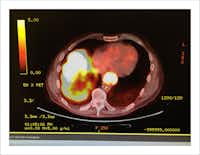
9/19/16 — Cancer cells grow faster and show more
"heat" than normal. White hot is bad. The circle near the spinal cord
is the tumor in my esophagus. The mass at left is in my liver.
(Guy Reynolds/Staff Photographer)
Sharing my images and a bit of my story online just
seemed natural in today's instant communication, narcissistic
atmosphere. I'll plead guilty to that.
My initial prognosis was not good. I was told that if chemo didn't work, then I'd be kicked into clinical trials. If no strong response followed, then I would have six months to live. The size of the liver tumor made surgery impossible.
I love images, especially the color shot from the endoscopy that shows what’s invisible to the naked eye. It’s fascinating to see what’s inside one’s body. The primary tumor is ugly and beautiful at the same time.
Fast-forward to early December 2017: Being bombarded with four poisons has been really easy and Icontinue to work most days with only minor side effects.
My initial prognosis was not good. I was told that if chemo didn't work, then I'd be kicked into clinical trials. If no strong response followed, then I would have six months to live. The size of the liver tumor made surgery impossible.
I love images, especially the color shot from the endoscopy that shows what’s invisible to the naked eye. It’s fascinating to see what’s inside one’s body. The primary tumor is ugly and beautiful at the same time.
Fast-forward to early December 2017: Being bombarded with four poisons has been really easy and I
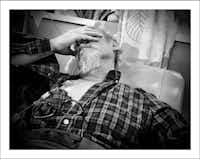
1/25/18 — Today I'm officially tired. Radiation
at 9:15; Meals on Wheels at 10; labs at 10:45; Dr. Paulson at 11:30;
chemo at 1:45. Up at 4:33 after 4 hrs 41 minutes of sleep (Fitbit knows)
gotta get home for nap.
(Guy Reynolds/Staff Photographer)
Other than fatigue, I can’t complain. I sleep a lot. I
put all my weight back on (plus some) within three months, a really good
sign. Blood work shows improvement every visit. I feel rather guilty
that chemo has been easy given what I’ve read and been told about how
debilitating it can be for others.
After nearly two years of chemotherapy, the big bad one in my liver has seen a "complete metabolic response": It's gone.
Today, the primary tumor is still active and I have some swallowing issues but overall I’m doing quite well. Surgery may now be an option to remove it, since the bad boy is gone. It’s a high-risk surgery because of its location, but we’ll see.
The chemo’s working; the battle continues.
Guy Reynolds has been a photographer and photo editor at The Dallas Morning News since 1996. An exhibit of his film-based photography titled "Not Dead Yet, (and neither is film)" will be at the Tammy Cromer Gallery in Dallas, opening Oct. 13. For more information, go to tammycromergallery.com.
After nearly two years of chemotherapy, the big bad one in my liver has seen a "complete metabolic response": It's gone.
Today, the primary tumor is still active and I have some swallowing issues but overall I’m doing quite well. Surgery may now be an option to remove it, since the bad boy is gone. It’s a high-risk surgery because of its location, but we’ll see.
The chemo’s working; the battle continues.
Guy Reynolds has been a photographer and photo editor at The Dallas Morning News since 1996. An exhibit of his film-based photography titled "Not Dead Yet, (and neither is film)" will be at the Tammy Cromer Gallery in Dallas, opening Oct. 13. For more information, go to tammycromergallery.com.
Editor’s note: Below are 30 of Guy Reynolds' #cancerchroniclesguy Instagram posts presented in chronological order. You can find him on Instagram @reyguy
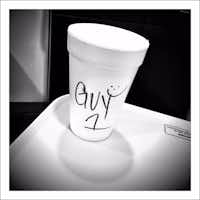
9/9/16 -- Contrast material I had to drink for the PET scan.
(Guy Reynolds/Staff Photographer)

9/11/16 — 179 pounds I believe I maxed out at
about 230 in Baton Rouge in 1990 or so. I haven't been under 190 since
'91. Haven't been under 180 since jr year of college when I was selling my blood plasma in order to buy my next meal.
(Guy Reynolds/Staff Photographer)
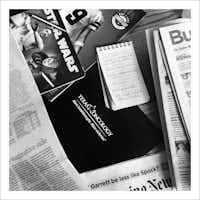
9/15/16 — Notes I made during the first
consultation with my oncologist. Cancer in two places. Surgery is not an
option. Secondary tumor covers 3/4 of the liver. Need to get a port.
Begin chemo next week.
(Guy Reynolds/Staff Photographer)

9/19/16 — IV time before port installation
procedure. A tad difficult to shoot my ownself so Nancy was pressed into
duty.
(Nancy Visser/Staff )
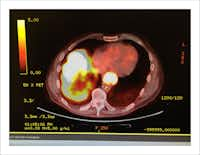
9/19/16 — This one had to be in color. PET scans
show the heat profile of cells. Cancer cells grow faster and show more
"heat" than normal. White hot is bad. The circle near the spinal cord is
the tumor in my esophagus. The mass at left is my liver. The good news
is the cancer isn't anywhere else. Chemo begins Thursday. Game on!
(Guy Reynolds/Staff Photographer)
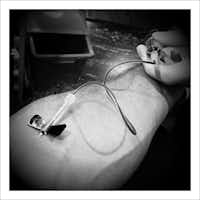
9/22/16 — Lab work. First order of the day. I
have good veins. I even sold my plasma several times in college when I
was desperately poor. Now I'm rich beyond my wildest dreams in so many
ways.
(Guy Reynolds/Staff Photographer)
![9/22/16 — [My wife] Nancy [Visser] the notetaker.(Guy Reynolds/Staff Photographer)](https://dallasnews.imgix.net/1538072830-guy-cancer-web007.JPG?q=30&w=200&fit=clip&auto=format&frame=1)
9/22/16 — [My wife] Nancy [Visser] the notetaker.
(Guy Reynolds/Staff Photographer)

9/22/16 — Dr. Scott Paulson. My oncologist.
(Guy Reynolds/Staff Photographer)

9/9/16 — I've had a mental illness a whole lot
longer than this physical ailment. In 1991 I had my first of many bouts
of depression and was diagnosed as bipolar. It's been a struggle to find
a balance with different meds and a roller coaster ride isn't easy for
me and it's even tougher for Nancy, who has to put up with me and my
swings. The point of the image: Cancer may beat me, but depression
won't. I refuse to get down about this.
(Guy Reynolds/Staff Photographer)
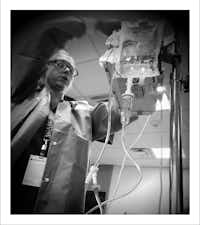
9/22/16 — Getting hooked up for the first day of chemotherapy.
(Guy Reynolds/Staff Photographer)
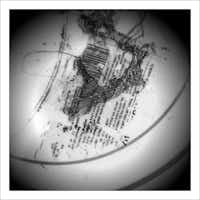
9/28/16 — According to Nancy there's a thing
known as chemo brain. This may be an example. Put the skillet on the
back burner on the range, Canadian bacon piece in, turned it on and went
upstairs to wake up Drew only to find the packaging melting on the
front burner when I came back down. Or it was just stupidity.
(Guy Reynolds/Staff Photographer)
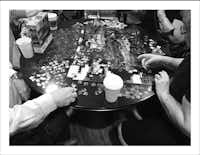
10/20/16 — Other cancer patients visit and work a
jigsaw puzzle in the chemotherapy waiting area.
(Guy Reynolds/Staff Photographer)
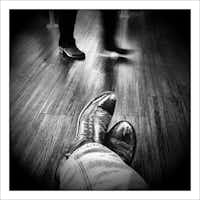
11/3/16 — The results were positive, according to Dr. P. Things are going well for now.
(Guy Reynolds/Staff Photographer)

11/3/16 — Lab work with Carlos again. Door code
wrist band. Dr. P said labs were improved again.
(Guy Reynolds/Staff Photographer)
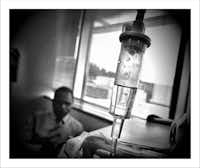
11/3/16 — Irwin visited and brought me
Schlotzsky's and a Cinnabon for lunch. Awesome.
(Guy Reynolds/Staff Photographer)

12/1/16 — Another one getting labs done.
(Guy Reynolds/Staff Photographer)
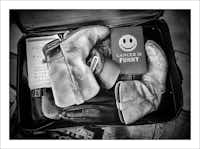
12/12/16 — Getting ready to go to M.D. Anderson for the first time. Cancer is Funny was sent to me by Courtney Perry.
(Guy Reynolds/Staff Photographer)

12/12/16 — Meeting Dr. Ajani at M.D. Anderson in
Houston for a second opinion about these pesky tumors in my esophagus
and liver. My brain is mush so Nancy does the listening and questioning.
Good to have The Rock in the room.
(Guy Reynolds/Staff Photographer)

12/13/16 — PET scanner. 30 minutes on my back
moving to and fro in that massive machine with my arms above my head.
Had a terrible headache at the start and kept falling asleep during the
scan. They had to wake me when it was over and the headache was gone.
Karma.
(Guy Reynolds/Staff Photographer)

12/15/16 — Last post from the first trip to
Houston and @mdandersoncancercenter to see Jaffer Ajani, the top
esophageal cancer doc around. Here we sit Thursday late afternoon in his
exam room waiting for the news about what Tuesday's PET scan showed. A
while later we were really smiling, not forcing it. The forest is thick
and I'm far from being out of the woods but some trees have fallen from
my path. Both tumors have shrunk. Big nasty in the liver considerably
so. Doc says do four more chemotherapy sessions in Dallas and return for
further imaging and he'll present my case to the group to discuss next
step. Radiation? Surgery? We'll see.
(Guy Reynolds/Staff Photographer)

12/12/16 — Therapy dog in the chemotherapy waiting room.
(Guy Reynolds/Staff Photographer)
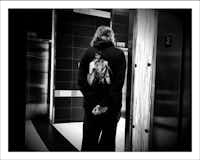
1/19/17 — Elvis has left the elevator. Time for
chemotherapy #9. 16-mile bike ride this morning. Trying to get more
regular exercise to combat the fatigue that follows the infusion of
poisons.
(Guy Reynolds/Staff Photographer)

1/19/17 — Ugh. This thing takes hours. Now I
wish I'd declined to be in the study but hopefully some good will come
of it.
(Guy Reynolds/Staff Photographer)

1/19/17 — That bike ride did me some good. Wyatt
McSpadden told me the key to cancer fighting is chilling and I'm so
chill I oughta be asleep with a BP this low. Lisinopril helps too.
(Guy Reynolds/Staff Photographer)
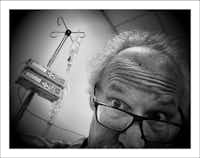
3/24/17 — Now just doing one poison for 90
minutes instead of 4 for 4 hours. Now if those mail-order pills will
just get here I can get on a much easier regimen. I was really hoping to
lose my hair so I'd have an excuse for the burgeoning bald spot. Oh
well.
(Guy Reynolds/Staff Photographer)
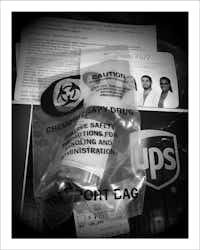
3/28/17 — Capecitabine tablets arrived yesterday
when I'd gone home to leave a note on the door for Mallory to call when
he was in the neighborhood. I can get home in about 8 minutes and the
package had to be signed for. Why? Because a 2-week supply costs $3,800.
That's right. And if the pkg is stolen off the porch I owe for it. How
can 84 pills cost that much? I'm taking six a day for two weeks and then
a week off with the next infusion at the end. So every three weeks
instead of every other will be better. If I tolerate the side effects of
the pills. They're replacing the 5-FU pump I have been wearing for 46
hours after each treatment.
(Guy Reynolds/Staff Photographer)
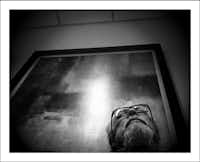
4/14/17 — Waiting for a chest X-ray before
chemotherapy. I'm tired. Always it seems. Hoping to get through this
pill side effects issue and continue on them since it makes the
infusions less frequent and no pump to wear afterward. Back on the pills
for a week so we'll see soon enough.
(Guy Reynolds/Staff Photographer)
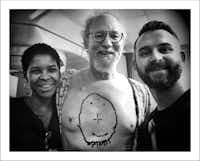
1/26/18 — Last of 15 radiology appointments
today. I surprised Ramona and Rob, the super zapping duo, with a big
smile. Courtney Perry suggested I draw a smiley face when she saw a
previous post showing the alignment tattoos. The little dot in the
center of the nose is permanent. The rest I did this morning. I know
it's pretty bad because my great artist son wouldn't do it for me.
(Guy Reynolds/Staff Photographer)
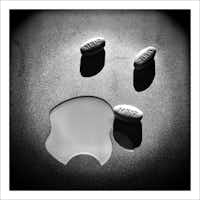
1/30/18 — The
last dose of capecitabine a.k.a. Xeloda (oral poison) for this week. I
take six a day for seven days beginning the day of chemotherapy
infusion. Then two weeks without. Then do it again. I will likely do
chemo until I die. They don't think I'll ever be cancer-free. Living the
dream.
(Guy Reynolds/Staff Photographer)





























 If you’ve spent any time reading about photography, you’ve probably come
across reverential mentions of Leica cameras and other “rangefinders”
used by a lot of great street photographers like Henri Cartier-Bresson
in the mid-20th century. I know I was confused when I first heard about
them since they aren’t really around anymore, so here’s what they are.
If you’ve spent any time reading about photography, you’ve probably come
across reverential mentions of Leica cameras and other “rangefinders”
used by a lot of great street photographers like Henri Cartier-Bresson
in the mid-20th century. I know I was confused when I first heard about
them since they aren’t really around anymore, so here’s what they are.

